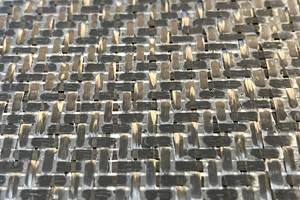Composites test method globalization and harmonization
In my previous column, I discussed the need for standardization of test methods and the progress that has been made in recent years (see “Related Content,” at left). However, we know from that column, and many preceding it, that when we attempt to determine material properties, there is often more than one
In my previous column, I discussed the need for standardization of test methods and the progress that has been made in recent years (see “Related Content,” at left). However, we know from that column, and many preceding it, that when we attempt to determine material properties, there is often more than one “standardized” test method available for measuring a specific property. In some cases there are many. The questions then arise: Are these various test methods comparable? Do they produce statistically equivalent experimental results?
Any attempt to answer these questions is complicated by the fact that the test methods in question could spring from many sources: company standards, government standards from around the world, consortia standards, national standards written for various nations by their own groups of technical experts, and formal standards written collectively by individuals and groups representing many nations. An investigation could, therefore, be international in scope.
That said, most test method standardization still is carried out on a national level. Although we hear much about globalization and the significant increase in business conducted at the international level, there are few global standards on which to base this global commerce. There is a need, there-fore — at least in the foreseeable future — to develop methods for ascertaining whether two or more test methods, whatever their sources, are comparable. This is sometimes referred to as bridging — determining what mutual changes (bridges) are required to make the various methods equivalent. More commonly, the term harmonization is used.
Harmonization begins with a detailed comparison of all aspects of each standard. As differences emerge, the challenge is to evaluate the significance of each. Ideally, statistically significant amounts of directly comparable experimental data should be generated. However, this is usually cost-prohibitive. In the absence such data, subjective evaluations are made. These may be based on observed trends in other properties, prior experience of the evaluators, or they may be primarily intuitive. Obviously, the validity of subjective evaluations can be readily questioned. However, they may be the only means of harmonization available.
Almost every mechanical and physical property of a composite material can be scrutinized in this comparative way. For example, consider the axial compressive strength of a composite material. In today’s compression test methods (see “Current compression ….” in “Related Content”) the specimen is loaded in one of three ways: by applying a compressive force directly on its ends, by shear loading through grips or by a combination of the two. While there are several methods available for achieving each of these three loading modes, we will consider for illustrative purposes only the most popular test method for each loading mode. As noted in the accompanying chart, the loading modes for the three test methods are very different. The IITRI test method introduces the compressive force via shear through the faces of each gripped end of the specimen. Thus, the shear loading relies on relatively heavy clamping of the specimen by the wedge grips, inducing significant through-thickness compressive forces. That is, a complex stress state exists in the gripped regions. Also, when testing a relatively high-strength material, the necessarily aggressive grip faces of the test fixture mandate the use of end tabs on the specimen to protect it from surface damage that could degrade the strength. This, however, creates a geometric discontinuity.
Pure end loading, as exemplified by the Modified D 695 test method, eliminates the through-thickness clamping forces. However, to prevent crushing of the specimen ends, it is usually necessary to bond tabs onto each specimen end to increase the load-bearing area. Eventually, all of this loading must be transferred back into the specimen itself through the adhesive bond line, thus introducing the same potential problems noted in the previous discussion of the shear-loaded specimen, although likely not as severe because only a portion of the total loading is transferred via shear. On the other hand, the method must achieve this transfer over a much-reduced overall length. The specimen is relatively thin. Therefore, the specimen gage length (the portion of the specimen that is not supported by the test fixture) must be short to prevent buckling. This raises the issue of whether the gage length is sufficient to permit the achievement of a uniform stress state.
Combined loading, represented by the ASTM D 6641 standard, represents a combination of the better features of the other two loading modes. Because it carries a portion of the load on the specimen end, less shear transfer is required between fixture and specimen, resulting in less clamping force. This reduces both the through-thickness compressive stress and the shear stress. Because of this combined loading, it is often possible to use a specimen without tabs, eliminating the previously discussed discontinuities.
When we compare the three types of loadings, several observations can be made. Specimen overall length is not a significant performance factor because, in all cases, it is sufficient for shear load transfer. On the other hand, specimen gage length could be a major concern. Is the very short gage length of the Modified D 695 specimen adequate? While intuition might suggest that the answer is no, detailed finite element modeling and experimental testing have conclusively shown otherwise. Stress concentrations at the grip ends decay very rapidly (typically within about 1 mm/0.040 inch or so) and, thus, the stress fields near each end do not overlap significantly, even for the 4.8 mm/0.188 inch gage length. Although it can be difficult to achieve uniform loading across the width if the specimen is very wide, in the example presented here, this is not an issue that will affect the comparison because specimen widths are identical. Specimen thickness also can be a factor because, as discussed above, shear loads introduced at the specimen surfaces ideally should be redistributed as uniform compressive stresses through the specimen thickness. However, thicker specimens also have a longer gage length over which the stresses can become uniform, thus specimen thickness becomes a minor factor. Finally, the presence of tabs is a factor because of the stress disturbances at the tab ends. For that reason, the shear-loaded specimen is the least desirable. The most desirable situation is to conduct the test without tabs.
Given the above, are the three test methods comparable? The answer is a qualified yes — qualified primarily because of the influence of tabs.
It is important to note that the foregoing comparison involved a relatively simple example. For many standards, the path to harmonization is much more arduous and can involve many more methods. Moreover, only a few detailed comparative studies have been performed, to date, on composites test methods. Many more will have to be performed during our long journey toward global harmony.
Related Content
Pontacol thermoplastic adhesive films are well-suited for composite preforms
Copolyester- and copolyamide-based adhesive films eliminate the need for sewing threads or binders when stacking laminates while improving the final part’s mechanical properties.
Read MorePark Aerospace launches aerospace, MRO structural film adhesive
Aeroadhere FAE-350-1 is a curing epoxy formulation designed for composite, metal, honeycomb and hybrid applications.
Read MoreHenkel releases digital tool for end-to-end product transparency
Quick and comprehensive carbon footprint reporting for about 58,000 of Henkel’s adhesives, sealants and functional coatings has been certified by TÜV Rheinland.
Read MoreHeat-activated foaming core rapidly achieves net-shape 3D parts
CAMX 2024: L&L Products exhibits its InsituCore foaming core structural technology, which can be used to create foam core composites minus machining or presses, as well as the Phaster A K-700, a rapid-cure adhesive.
Read MoreRead Next
Plant tour: Daher Shap’in TechCenter and composites production plant, Saint-Aignan-de-Grandlieu, France
Co-located R&D and production advance OOA thermosets, thermoplastics, welding, recycling and digital technologies for faster processing and certification of lighter, more sustainable composites.
Read MoreAll-recycled, needle-punched nonwoven CFRP slashes carbon footprint of Formula 2 seat
Dallara and Tenowo collaborate to produce a race-ready Formula 2 seat using recycled carbon fiber, reducing CO2 emissions by 97.5% compared to virgin materials.
Read MoreVIDEO: High-volume processing for fiberglass components
Cannon Ergos, a company specializing in high-ton presses and equipment for composites fabrication and plastics processing, displayed automotive and industrial components at CAMX 2024.
Read More





















